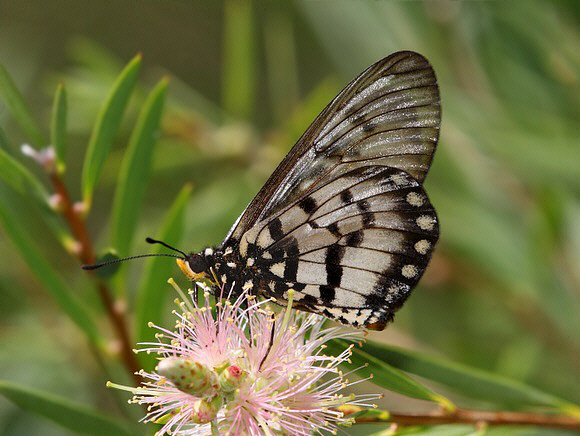
Introduction
The Heliconiinae comprises of 3 tribes – Acraeini, Argynnini and Heliconiini. The Acraeini includes the Neotropical genera Abananote, Altinote and Actinote; and the Oriental / Australian Cethosia, as well as Acraea which includes 230 African species, one Australian species, and 5 in the Oriental region.
All Acraea species have elongate forewings and rounded hindwings. The wings are thinly scaled to the extent that in many species they are semi-transparent. The scales tend to get rubbed off very easily so that insects more than 4 or 5 days old have a distinctly glassy or greasy appearance.
Acraea andromacha is found in West Irian, Papua New Guinea, New Caledonia and Australia.
Habitats
This species inhabits dry lightly forested areas at elevations between sea level and about 1000m.
Lifecycle
The eggs are creamy yellow and ribbed. They are laid in loose clusters of up to 50 on the stems of the larval foodplants. The caterpillars are glossy brown with long multi-branched black dorsal and lateral spikes. They feed gregariously in the early instars but gradually split up becoming solitary by the final instar. The principal larval foodplants are Adenia and Passiflora ( Passifloraceae ) but they will also use Hybanthus ( Violaceae ). The pupa is white, with broad black lateral and dorsal stripes that contain a series of orange spots. The wing cases are streaked in black.
Adult behaviour
Males flutter constantly in search of females, which do not fly until after copulation has taken place. The butterflies usually roost overnight high up on twigs or foliage.

